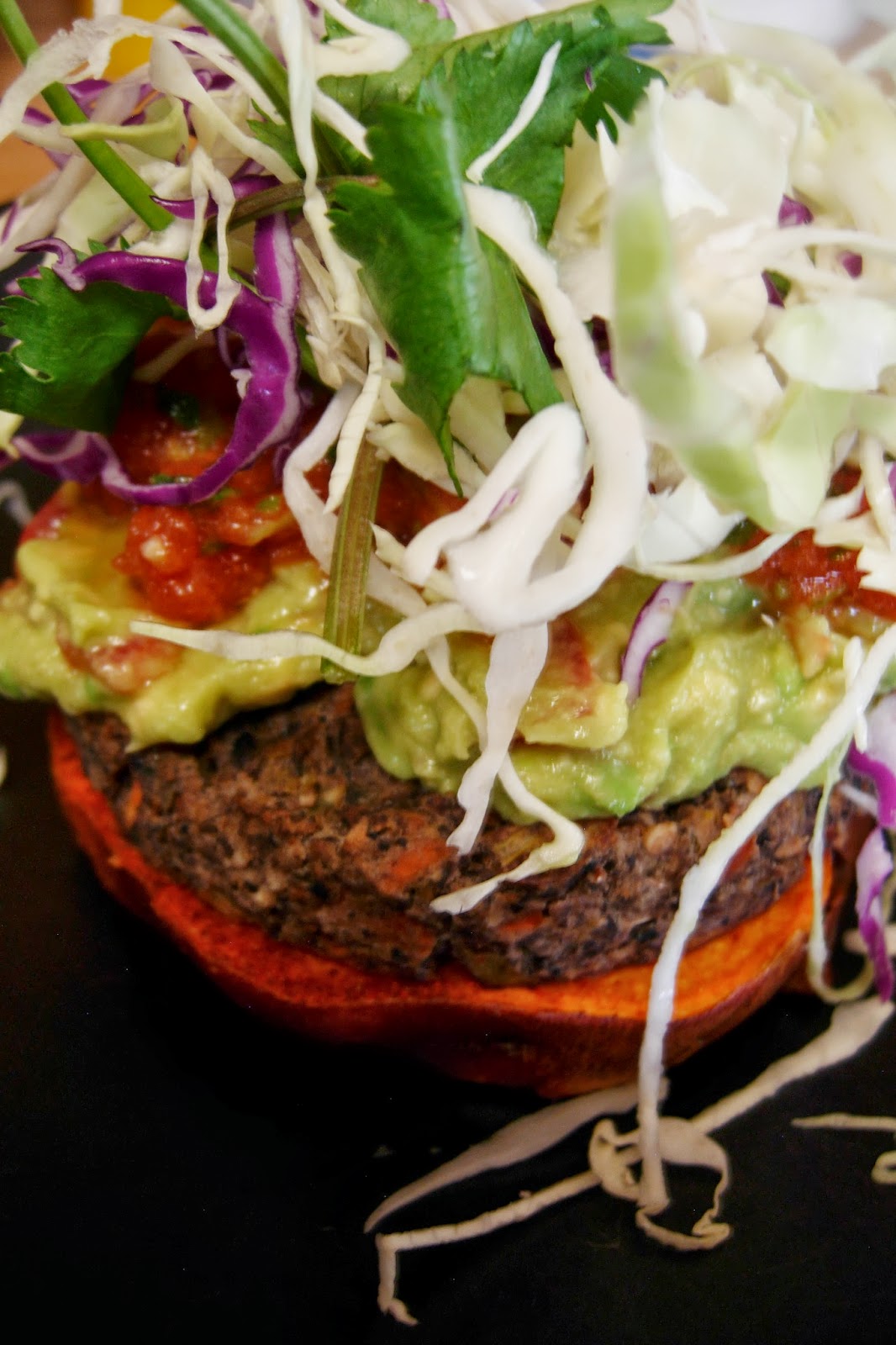Potato pancakes are one of my favorite breakfast foods, but I love them so much because they are much more than just breakfast. There are so many different things that you can flavor or top them with to make them fabulous. Here are a few tips on how to make a great potato pancake!
Picking your potato:
In this recipe, I used a sweet potato. Well, it was called a Jewel yam in the store, but it is really just a different type of sweet potato with reddish skin, and bright orange meat. There are two great reasons to use sweet potatoes instead of your normal waxy or starchy potato. First of all, sweet potatoes are packed with vitamins and minerals and they are fairly low on the glycemic index. In other words, they are super healthy for you! Secondly, sweet potatoes are extremely flavorful all by themselves. They are rich and buttery and pair well with both sweet and savory ingredients. I made a savory sweet potato pancake, however the full-bodied sweetness of the potato still shone through, so the flavor was wonderfully complex.
NOTE: If you're interested in the difference between a yam and a sweet potato, here are two interesting articles:
http://www.marksdailyapple.com/difference-yams-sweet-potatoes/#axzz2U3JA1Woe
http://voices.yahoo.com/yam-vs-sweet-potato-nutrition-health-benefits-compared-2643896.html?cat=22
However, using regular potatoes is just as delicious. You have a choice between a starchy potato which is drier and will be flaky inside when cooked (think baked potato) or waxy potato which is juicier and holds together when cooked (think red potato). Both could work in this context, but I usually go for waxy potatoes because their skin is usually much thinner which is easier to eat. A lot of the nutrients in a potato are in the skin, so I never like to waste it! The only downside to waxy potatoes is that they can become gummy when overcooked. This can potentially make your pancakes gooey inside if they are too thick, and you wouldn't want to use them for mashed potatoes because you'd end up with glue. In this context, the potatoes are fried quickly and in a very thin layer, so either option should work just fine.
What to add:
I like my potato pancakes savory, so I added in some curry powder to spice them up. However, there are so many ways to make your potato pancake special. Many sweet or savory ingredients can be added to them, and you can also be creative with toppings! Here are a few combinations that I came up with to show you what's possible:
1. sweet potato pancake with curry powder, fresh cilantro, and chopped green onion topped with a fried egg
2. waxy potato pancake with chopped parsley and chives, a little lemon juice, topped with sour cream
3. sweet potato pancake with brown sugar and cinnamon topped with apple sauce
Here's a list of ingredients that you can add into the pancake batter:
-spices: curry powder, chili powder, sweet and smoked paprika, garam masala, cinnamon
-herbs: cilantro, parsley, chives, thyme, basil
-green onion
-minced garlic, ginger, or hot pepper
-lemon or lime juice
-cheese: cheddar, blue cheese, feta
-fried, crumbled bacon
List of toppings:
salsa
guacamole
fried or scrambled egg
sour cream
apple sauce
pesto
fresh greens: arugula, watercress, mixed baby salad greens
honey
yogurt
fresh berries
bacon or sausage
Here's the recipe that I made today. The technique is the same for whatever potato you choose, and whichever ingredients you wish to put into the pancake. They are basically just shredded potatoes with a little flour and egg, then pan-fried to delicious golden-y goodness!
T.E.A's Sweet Potato Pancakes
gluten-free version
makes 2 medium pancakes
1 cup shredded sweet potato with skin (a cheese grater or mandolin works great for this)
1 egg
2 TB garbanzo bean flour (you can substitute wheat flour)
1 tsp curry powder
1/4 tsp salt or to taste
oil for frying (I used a combination of coconut and olive oil)
1. Add all ingredients in a bowl. Stir until combined. The batter should not be too wet or dry. Adjust flour amount if necessary.
2. Heat a medium or large skillet on medium high heat. Add in enough oil to cover the bottom of the pan. When oil is shimmering, pour in pancakes. Each pancake will be 1/2 cup of batter each. Flatten each pancake with a fork to make sure it will cook evenly.
 |
| This is a fish spatula and I use it everyday...for everything. I would highly recommend investing in one! |
3. When the edges of the pancake start to brown, flip it over. When each side is nicely golden, place pancakes on paper towels to drain.
4. Serve immediately or keep in a warm oven until ready to eat. These will refrigerate, but they aren't nearly as good re-heated!
 |
| mmm...breakfast! A couple fried eggs and a quenelle of guacasalsa...yum! ENJOY! |















































